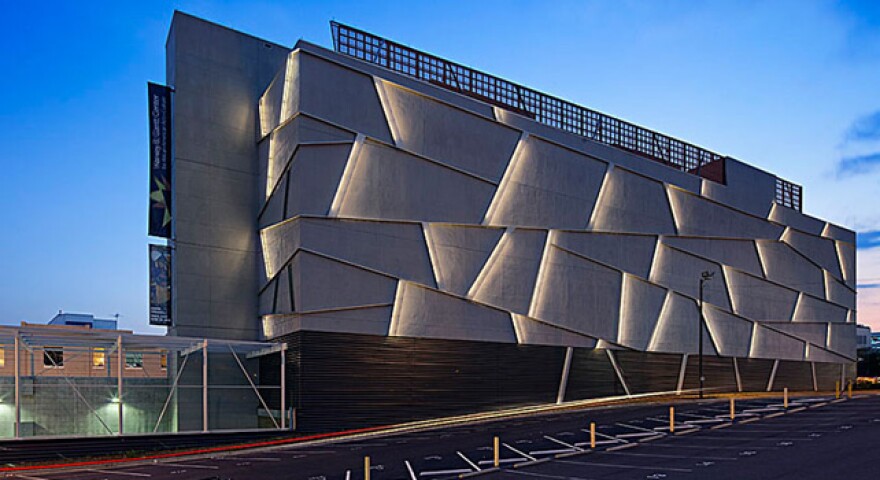Acclaimed African American architect Phil Freelon of Durham died Tuesday at the age 66. He was diagnosed more than three years ago with ALS, or Lou Gehrig's disease. Freelon was well known for his work designing museums including the Smithsonian National Museum of African-American History and Culture, which opened in 2016 in Washington, D.C.
Freelon’s Durham architectural firm also designed many other public and community facilities, including the Harvey B. Gantt Center for African-American Arts and Culture in Charlotte.
David Taylor is CEO of the Gantt Center and he joined WFAE's All Things Considered Host Mark Rumsey to discuss Freelon’s work and legacy.
Mark Rumsey: Mr. Taylor, good afternoon.
David Taylor: Good afternoon.
Rumsey: First, what was your direct acquaintance and work with Phil Freelon?
Taylor: I had the pleasure of meeting Phil back in 2005 when the Gantt Center, then the Afro-American Cultural Center, was considering moving into a new space and building a new building. You know, we had a challenge in space. Our space then was 50 feet by 400 feet. It is what the Gantt Center sits on today. Several architects felt there wasn't anything that they could do with that space. But Phil was inspired by the space, and saw clearly what it could be and what it meant to be in uptown Charlotte and anchor a city block.

Rumsey: Can you say more about how these specific designs of the Gantt Center that Mr. Freelon was behind have had that kind of impact?
Taylor: Yes, I think one of Phil’s strengths was understanding community. I think first and foremost he understood the importance of institutions of color, particularly African American institutions surviving and being able to sustain themselves. And I think that drove him and his passion about doing this.
So when he came to the Gantt Center he thought about how he could connect community. He realized that, you know, where we sit was on the edge of the Brooklyn community that existed here in Charlotte. And he understood the importance of that. He also understood the importance of connecting our culture. So when we look at the skin of our building, it really speaks to quilting and West African textile concepts. So he immediately incorporated that into the skin, so we had that connection, and now you see it.
You know we're coming up on our tenth year, right? So we look around the country and you look at the National Museum, you look at the Gantt. You look at the work he did with the Civil Rights Museum down in Atlanta. Again the MoAD, Reginald Lewis. You're seeing his fingerprint on the landscape around the country.
Rumsey: And along the lines that you were speaking, do you think Mr. Freelon’s work specifically influenced that of other African American architects?

Taylor: Yeah, I really do. I think what Phil demonstrated early on with his vision is that he saw a need for expertise and a market, if you will, for working in a specialty area. It was a passion of his. He took his firm and kind of directed some of his time and some of his team's time to this whole thing about cultural institutions. I do think he's kind of set the tone and vision for others to be able to do that.
Rumsey: And Mr. Taylor, it's been observed that Phil Freelon saw architecture as a, "quiet form of activism and education." That's according to a Washington Post story on his death. I'm just wondering from your own experience can you elaborate on that or did you observe that yourself?
Taylor: Certainly. One, we live it every day here at the Gantt Center. I think, you know, art is a form of activism. Phil’s grandfather was an artist. I think he grew up around that and kind of understood and kind of had a firsthand appreciation about what art could be.



